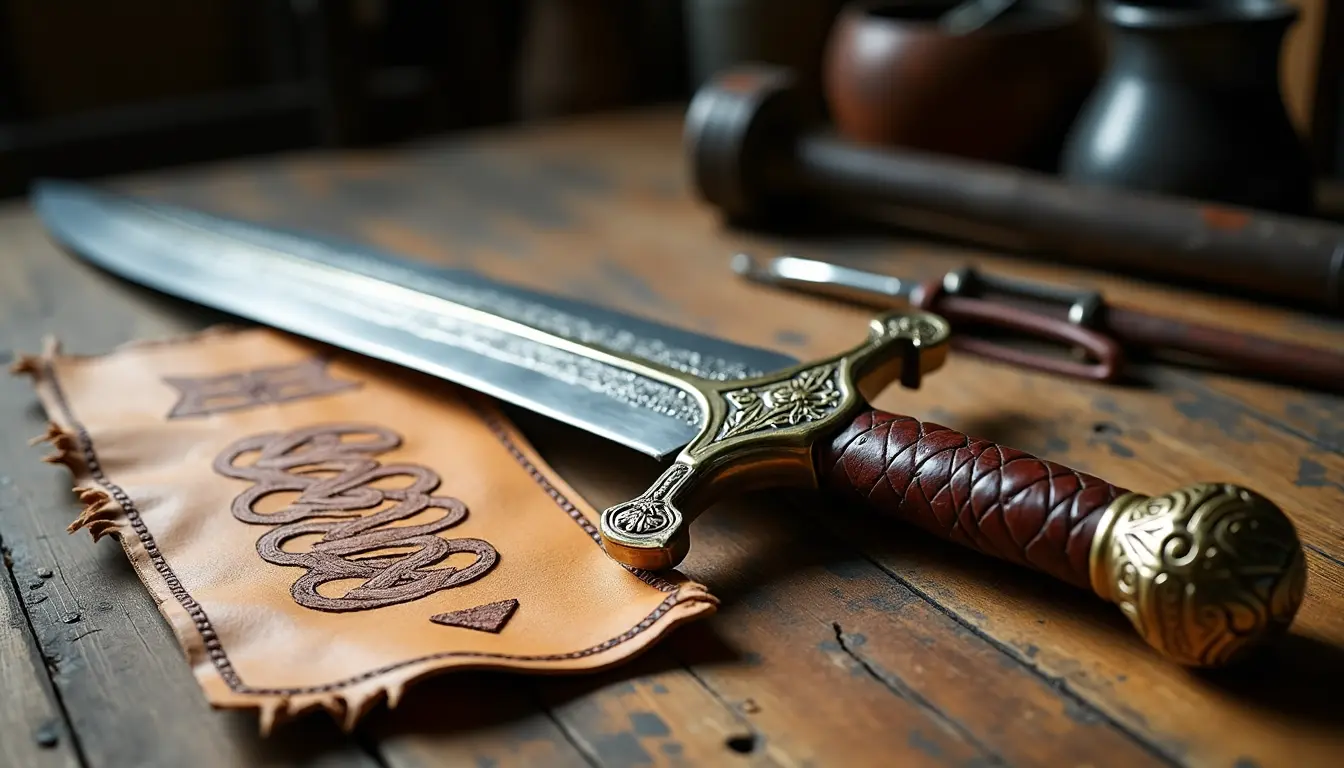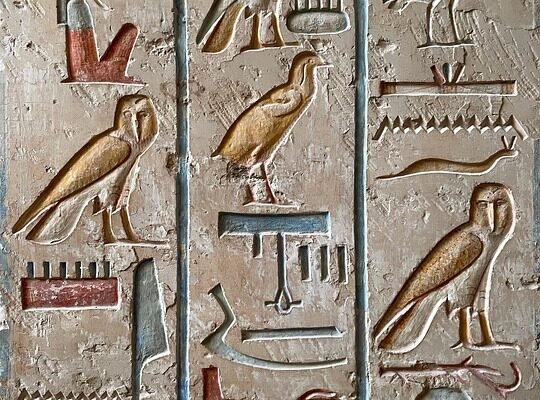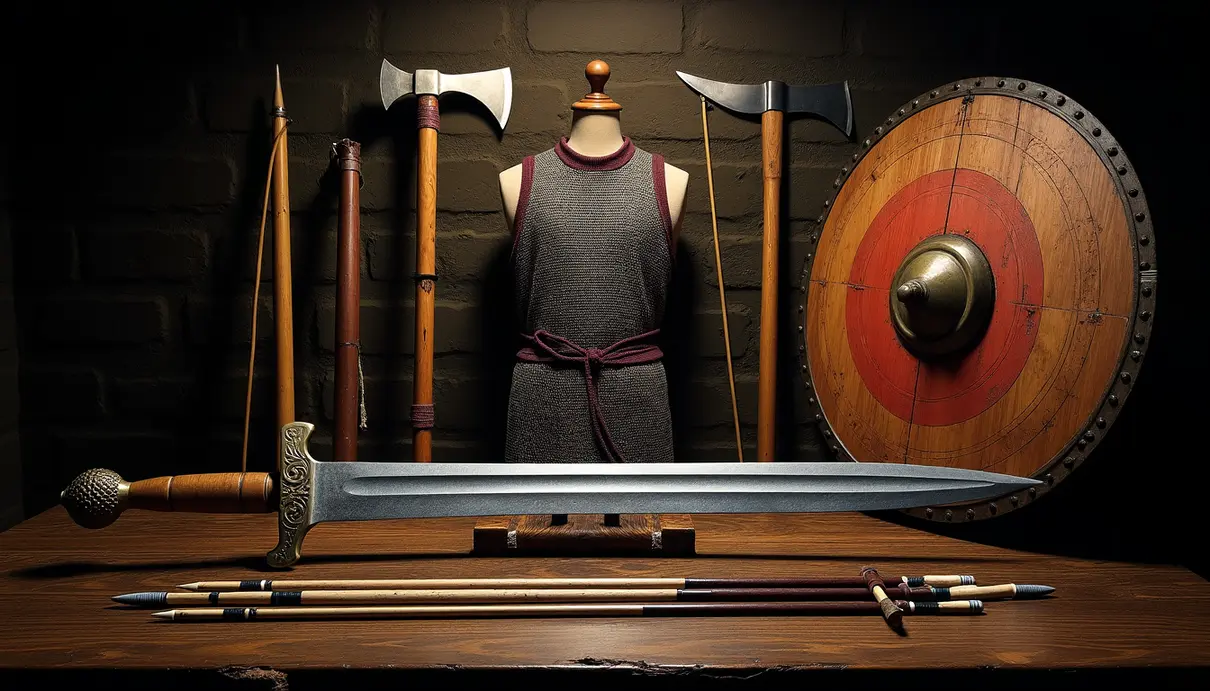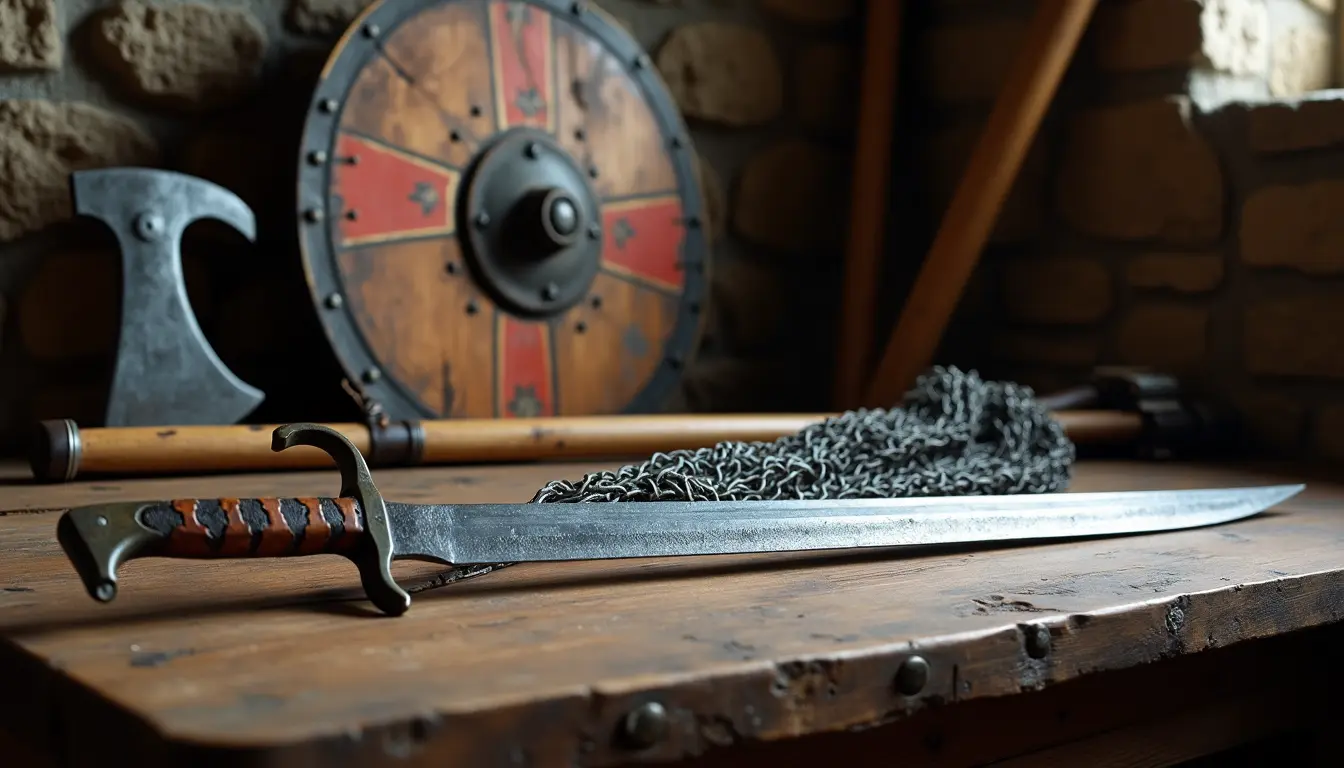

Ancient Weapon Symbols in Today’s Design World
Viking arts have captured the imagination of people since the 8th century, showcasing remarkable weapons and symbols that tell powerful stories of honor and cultural identity. The golden age of Vikings, spanning from the 8th to 11th centuries, produced masterpieces that transcended mere tools of warfare. Viking swords, ranging from 80-90 cm in length, became cherished family heirlooms with intricate designs and deep meanings. These magnificent pieces displayed unique Viking art styles that evolved from early Oseberg to later Urnes, reflecting their extensive cultural exchanges throughout Europe. Today, modern design has revitalized this ancient craftsmanship, with symbols like Thor’s hammer and the Helm of Awe making regular appearances in contemporary fashion and art.
Viking weapon symbols hold historical significance and continue to shape modern creativity in unexpected ways. The types of Viking weapons, including swords, axes, and spears, blended deadly function with artistic brilliance, showcasing the cultural sophistication of the Norse people. Viking swords symbolized prestige, crafted through pattern welding techniques that merged wrought iron with mild steel strips. The Ulfberht signature adorned many blades, with silver accents and intricate inlays highlighting the owner’s status. Axes, particularly the bearded ax and the Dane ax, were common Viking weapons, featuring detailed engravings that brought Norse mythology to life. Spears held deep meaning in Viking culture, with powerful runes and mystical symbols adorning these weapons.
Each weapon type revealed unique artistic elements that set Viking craftsmanship apart, from pattern-welded sword blades to silver-inlaid ax heads and spear shafts with runic inscriptions. The meaning of Viking weapon marks goes beyond mere decoration, with symbols like the Aegishjalmur (Helm of Awe) and Mjolnir (Thor’s hammer) holding deep spiritual and cultural significance. These protective symbols bridged the gap between mortal and spiritual realms, transforming simple weapons into powerful talismans of protection and strength.
The process of creating Viking weapons involved intricate metalworking techniques and careful attention to detail. Viking blacksmiths extracted bog iron from Swedish Sami territories, combining pure iron with steel to create strong and flexible blades. Forging methods included pattern-welding, where thin strips of metal were woven together at high heat to create stronger blades. Decorative techniques such as gilding, silvering, and inlay work with precious metals added artistic flair to these weapons.
Viking art continues to influence modern design, with Norse craftsmanship breathing new life into contemporary living spaces. Viking-inspired home decor items, including handcrafted wooden furniture and metal artwork, bring powerful symbolism and intricate designs into modern homes. Natural materials like wood and metal, combined with textiles in earth-toned colors, add warmth and cultural depth to Viking-inspired spaces. Protective symbols found on ancient weapons are incorporated into modern decorative elements, creating immersive environments that honor Norse heritage.
Learning Viking weapon art requires an understanding of both ancient techniques and modern tools. Basic symbols like the Valknut and Thor’s hammer serve as foundations for weapon art, while drawing techniques focus on precise line work and balanced composition. Modern tools are used alongside traditional decorative techniques to create authentic Viking designs that stay true to their historical roots.
In conclusion, Viking weapon arts exemplify Norse craftsmanship that blends deadly efficiency with stunning artistic expression. These ancient artisans knew how to balance form and function perfectly, creating weapons that surpassed mere tools of warfare. Today, Viking art continues to inspire contemporary design, connecting us to historical craftsmanship and cultural heritage. Ancient designs in home decor and metalwork serve as a reminder of the enduring appeal and adaptability of Viking arts.







